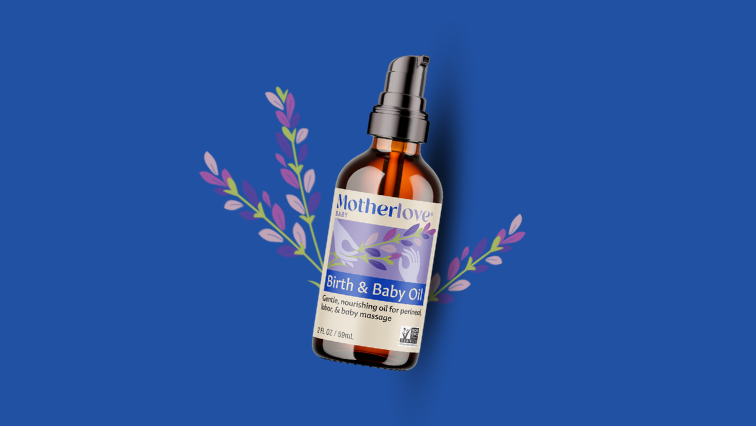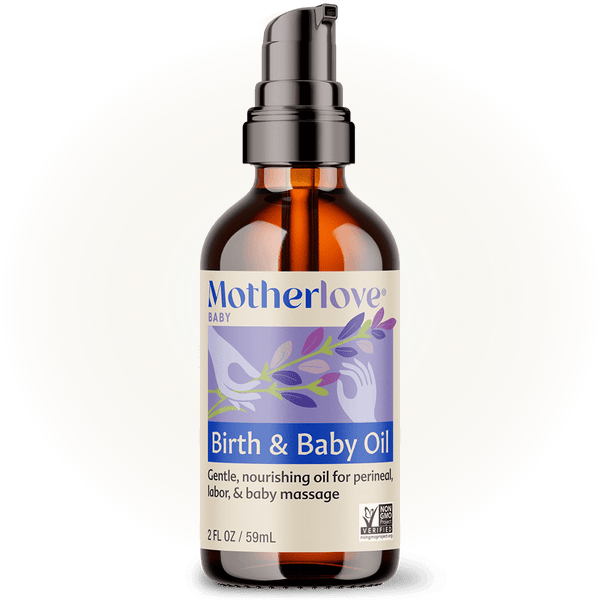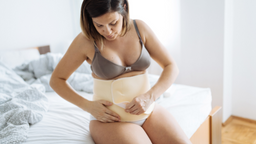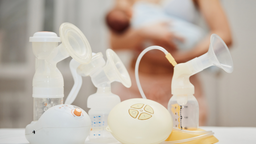Written by: Bentley, Doula
As a doula, one of the most common concerns I hear pregnant persons express is the fear of tearing during labor. The tearing they are referring to is perineal tearing, sometimes referred to in research as perineal lacerations. Your perineum is the area between your vaginal opening and your anus and there are a few things that may lead it to tear during childbirth. While there is no way to definitively prevent tearing, there are some exercises and preventative measures women and birthing persons can engage in prenatally and during labor to reduce the risk of tearing, or to at least reduce the severity of tearing experienced. One thing I often recommend is perineal massage.
WHAT IS THE PERINEAL AREA?
Your perineum is made of multiple layers of tissue, and these tissues thin out and stretch throughout the labor process as your body accommodates the form of your baby. Research shows that 44-79% of women and birthing persons tear,[1] and 85% sustain some type of perineal injury during a vaginal delivery (whether tearing or episiotomy).[2] During labor, specifically during the second stage (the pushing phase), your perineum may tear for multiple reasons, including: this being your first baby, a large baby, baby’s position, if you’ve had an episiotomy (a cut made to the perineum), instrumental delivery (forceps, vacuum, etc.), shoulder dystocia, a long second stage (pushing phase), and having a quick delivery.[3]
WHAT IS PERINEAL MASSAGE?
Perineal massage, or regular massage of the perineum, can increase the elasticity of tissue and muscles which can help your perineum stretch more easily to accommodate baby. I am going to briefly describe how to engage in perineal massage, but for instruction of proper form, please seek guidance and support from a pelvic floor physical therapist. For optimal results, it’s recommended that starting at 34 of 35 weeks, you spend 10-15 minutes a few days a week doing perineal massage.
THE HOW TO'S OF PERINEAL MASSAGE:
The massage can be self-administered or done by a partner.
Follow these steps:
- Sit in a warm bath or use a warm compress before starting. This will help you relax and loosen the muscles around your perineum.
- Be sure your nails are trimmed.
- It’s important to be as relaxed as possible during the massage, so be sure you are in a comfortable position and in a location where you feel comfortable (and safe).
- Lubricate your fingers with a safe, non-toxic lubricant (Motherlove Birth & Baby Oil).
- Insert 1-2 lubricated fingers about 2 inches in the vagina and apply pressure downward (toward the anus) for about two minutes, then side-to-side for about 2 minutes. You will begin to feel a stretching sensation.
- Don’t forget to breathe! Breathe deeply and audible. This is a good time to practice different breathing techniques that you might want to utilize during labor.
- Using a U-shape movement, massage along the bottom half of your vaginal opening to continue to stretch those muscles and tissues.
DON'T OVERDO PERINEAL MASSAGE
It’s important not to overdo it when it comes to perineal massage. You can engage in this technique weekly, but some research shows it’s not always more effective the more often you do it.[4] Additionally, be sure to listen to your body in terms of how much pressure you’re applying. Perineal massage is not always as relaxing and comfortable as other types of massages, so have grace and patience with yourself as you adapt to this new sensation. If you experience extreme discomfort, don’t force yourself to continue.
Perineal massage is not the sole way to mitigate tearing. Think through the pushing phase when considering ways to try to prevent tearing. A 2014 study found birthing persons who birthed with an epidural had a 1.95 times greater risk of perineal tearing than those who did not.[5] Additionally, mother’s position during pushing and delivery matters—pushing on your back increases the likelihood of tearing. Lastly, the length of the pushing stage matters. Bearing down and pushing (especially while holding your breath) when you do not sense an undeniable urge to push, may cause you to put undue pressure on your perineum and increase your risk of tearing.
As I said, it is not possible to totally eradicate the potential for tearing. However, some research shows that engaging in perineal massage during the last weeks of pregnancy can reduce your risk of tearing. The benefits of perineal massage is seen most strongly in first time mothers who are giving birth vaginally.[6] A 2006 study found that first-time moms who engaged in perineal massage had a 10% decrease in the risk of tears that required stitches.[7] This correlation is not as strong in the research for second-time mothers.
Overall, there is a need for more research specifying how often and for how long expecting parents should engage in perineal massage during pregnancy to optimize benefits. Preventing tearing through education and promoting pelvic floor health can help reduce the current rates of urinary incontinence and increase mothers’ feelings of satisfaction with their birth experience. At the end of the day, have faith that your body was built to accommodate your baby. Always remember that you are strong, powerful, and your body is wise. Tearing is not a sign of failure, it’s a reminder of strength.





